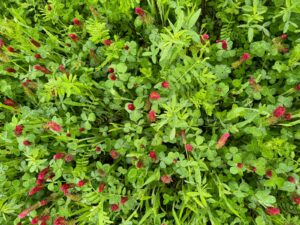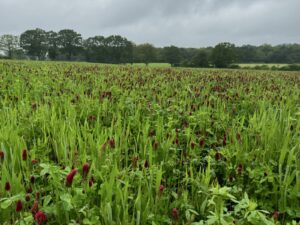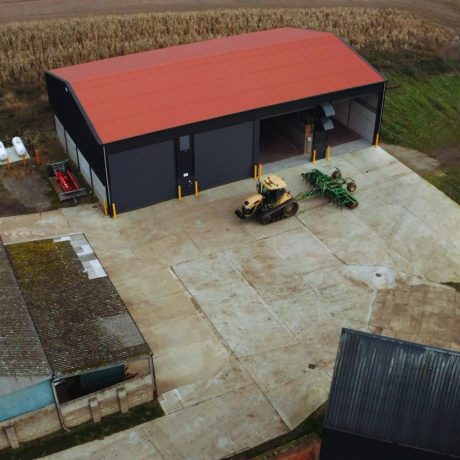More updates announced to SFI 2024
Chloe Timberlake
Aug, 09 2024The update issued by Defra in early August includes important new information on the expanded Sustainable Farming Incentive 2024 scheme, as well as some much-needed clarification and further detail.
Ceres Rural farming consultant Chloe Timberlake picks out the main points:-
1. New Capital Items
Six new capital items and funding towards two new plans have been added to the capital grants offer – with an emphasis on agroforestry tree planting.
Of interest to many will be AF1 and AF2, which pay £5.40/tree for agroforestry plantings of woodland or £17.83/tree for fruit trees respectively in very low (30-50 trees/ha) or low (51-130 trees/ha) density schemes. Agroforestry systems either self-funded or funded by the afore-mentioned capital grants could then attract a revenue management payment using either actions AGF1 or AGF2.
Within the new capital offer is also new generous grant funding for tree guards, to help protect newly established trees.
2. Adding Actions/Land
Agreement holders will not be able to add land or actions on the anniversary of an existing agreement. Instead, they will have to start a new agreement if they want to expand the SFI scheme on their holding or be more ambitious. This will add complication with multiple agreements with differing start and end dates.
3. Legume Fallows/Herbal Leys
Both CNUM3 legume fallow (£593/ha) and CSAM3 herbal leys (£382/ha) can now once again be rotational if preferred, rather than static only for the three-year duration. Instead, the wording for both actions has been tightened up and specifies that ‘they ‘must’ be established by autumn and be maintained at the same location for a period of time that can be reasonably be expected to achieve the action’s aim, which will ‘usually be until the end of the second summer of sowing’ Those wishing to establish a legume fallow in the spring and remove it in the summer of the same year are instead directed to the new spring or summer-sown cover crop actions as an alternative.
4. Ending Agreements Early
Guidance has now been released stating that it will be possible to end either a Countryside Stewardship mid-tier or Higher Level Stewardship agreement early in September and apply for an SFI agreement. There will not be any requirement for any new agreement to be the same as or similar to the agreement being ended.
5. Limited Area Actions
The number of actions where use is limited to 25% of farmed area has been increased from six to ten, and now extends to also include in-field grass strips (WBD3), bumblebird mix (AHW1), unharvested cereal headland (AHW9) and cultivated areas for arable plants (AHW11). If more than one SFI agreement is held, this 25% limit applies to the total eligible area entered into ‘limited area’ actions across all SFI agreements.
6. Voluntary Advice
There is new voluntary advice for each SFI action, which provides extra detail and guidance and helps to explain what Defra considers to be good practice.
A good example of this is with SOH1, the no-till action (£73/ha), which now includes information on preparing for no-till, choosing a drill, establishment, weed/pest/disease control and enhancing natural drainage.
7. Adding Supplementary Actions
Supplementary actions can now be added to 23 base actions in SFI 2023 rather than just SFI 2024, broadening the scope of the scheme and bringing greater financial reward.
For example, the GRH7 haymaking supplement (£157/ha) or GRH8 late haymaking supplement (£187/ha) can now be added to LIG1 or LIG2 low input grassland (£151/ha) from SFI 2023 schemes, bringing the total payment to over £300/ha. Likewise, it can be added to the endorsed action GRH6, species rich grassland (when it becomes available), taking the payment to in excess of £800/ha depending on the timing of the hay cut.
Another example is that AHW2 supplementary bird food can now be added to the base AHL2 winter bird food action in SFI 2023 (£853/ha).
8. SSSI Clarification
The process for getting consent for actions on SSSIs has been clarified. Aside from a number of moorland actions, consent is also required from Natural England to carry out the action CLIG3 (low-input grassland) on SSSI land.
9. Action Detail
Reading the fine print for actions would be time well-spent, as many subtleties have been introduced.
Examples include PRF2 ’camera or remote sensor guided herbicide spraying’, which now clarifies an allowance for the blanket spraying of pre-emergence herbicides, and PRF1 variable rate application of nutrients, which specifies that it applies to macro nutrients only N, P, K and Mg, applied above quoted thresholds
It is recommended to take advice from a professional consultant with regard to suitability of actions, before committing.








